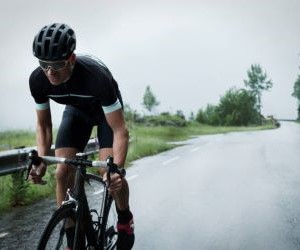Master endurance cycling in tropical climates with effective strategies. Learn hydration, heat adaptation, and training tips for peak performance.
HOW DO I TRAIN FOR ENDURANCE IN HOT CLIMATES?
Training in hot climates poses unique physiological challenges, from dehydration and overheating to mental fatigue. Whether you're preparing for a summer ultra, a desert triathlon, or simply riding through heat waves, this guide reveals science-backed methods to build endurance in high temperatures safely and effectively. Learn how to adapt your body, fine-tune your gear, and adjust your training strategy for heat-proof performance.

How heat impacts endurance training
Exercising in high temperatures puts extra stress on your cardiovascular system, muscles, and brain. Your body works harder to regulate core temperature, often redirecting blood flow from muscles to the skin for cooling. This can lead to early fatigue, slower pace, and elevated heart rate—even at moderate effort.
Understanding physiological stress from heat
When training in heat, your sweat rate increases significantly, often leading to dehydration and electrolyte loss. Heat can also impair your VO2 max, muscle efficiency, and focus. Over time, unacclimated athletes may experience heat exhaustion or heat stroke if precautions aren't taken. Key early warning signs include dizziness, nausea, and chills—despite high temperatures.
Elevated resting and working heart rates
Increased perceived exertion
Greater risk of dehydration and sodium depletion
Cognitive decline during longer efforts
Compromised sleep and recovery if overheated
Understanding how your body responds to heat stress is the foundation for making smart adjustments in your training. Recognizing these symptoms early and preparing your systems can help you train effectively and safely in any hot environment.
Heat acclimation strategies that work
To build heat tolerance, athletes must gradually expose themselves to warmer conditions over time. This process—known as heat acclimation—teaches your body to manage thermal stress more efficiently by improving sweat response, cardiovascular stability, and plasma volume.
Gradual adaptation is key to performance
Begin with short, controlled sessions during the cooler parts of the day and slowly increase exposure time or temperature. Most athletes require 7–14 days of consistent heat exposure to see measurable adaptation. You’ll notice you start sweating sooner and more efficiently, and your perceived effort at the same pace will decrease over time.
Start with 20–30 minute workouts in heat
Train at lower intensities until acclimated
Add heat progressively, 5–10 minutes per day
Use indoor sessions with heaters or layers for simulation
Monitor sweat rate and fluid loss post-workout
For athletes with limited outdoor access, heat training can also be done indoors using heated rooms, sauna sessions, or overdressing methods to simulate hot weather. These tools, when used strategically, mimic thermal load and accelerate adaptation—especially useful for prepping for races in hot destinations.
Hydration, gear, and pacing in the heat
Once you're acclimated, maintaining hydration and adjusting gear and pacing are critical for sustained endurance. Training in the heat isn't just about suffering through—it’s about optimizing inputs to get maximum output without overheating.
Tools and tactics for hot-weather success
Fluid intake should match sweat loss, which can range from 0.8 to 2.5 liters per hour depending on intensity. Use electrolyte mixes with sodium, potassium, and magnesium to replace what's lost. Monitor urine color post-session as a hydration check. During long rides or runs, cold drinks or ice vests can significantly lower core temperature and improve performance.
Drink 400–600ml of fluid every 30 minutes
Add 300–600mg sodium per hour from drinks or tablets
Wear moisture-wicking, light-colored clothing
Use insulated bottles to keep liquids cool
Adjust pacing to avoid early burn-out
Gear matters too. Opt for breathable jerseys, UV-protective sleeves, and ventilated helmets. Sunglasses with anti-fog features help maintain visibility. In terms of pacing, expect a slower time in high heat—use perceived effort or heart rate over speed or power as your training metric to avoid overheating. Planning your sessions around early mornings or evenings also ensures safer, more productive workouts in hot climates.
YOU MAY ALSO BE INTERESTED






